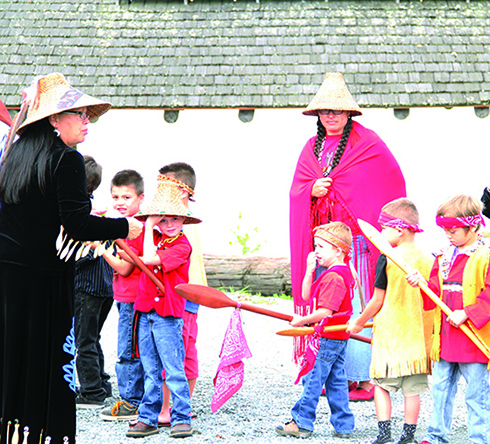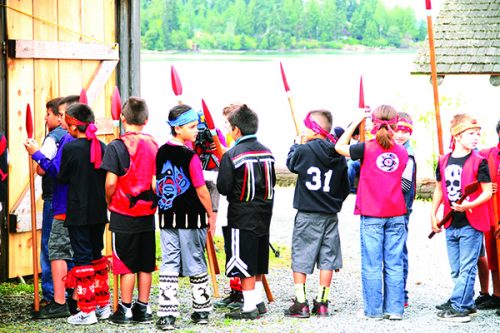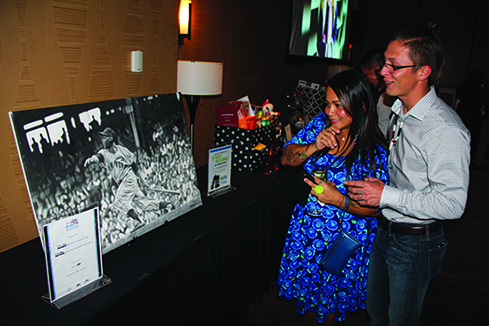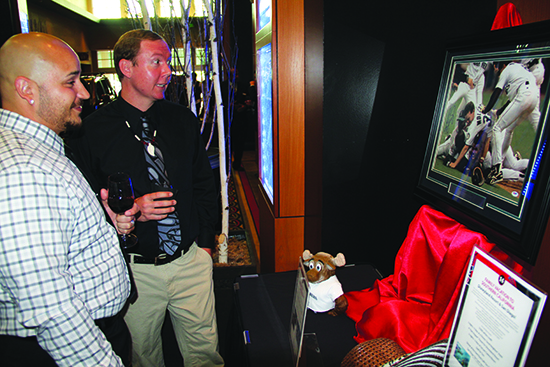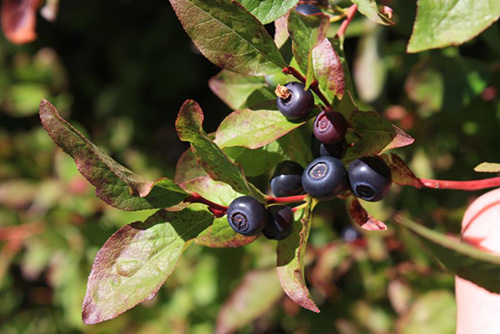Month: June 2016
Renewable/Clean Energy Careers
Jeanne Steffener, Higher ED
Renewable/clean energy is defined as energy gathered from resources that are naturally replenished and include: solar, wind, rain, tides, waves, biomass, radiant energy and geothermal heat. Renewable energy is collected in four (4) important areas: electricity generation, air and water heating/cooling, transportation, and rural (off-grid) energy services.
Renewable energy provides big benefits for our climate, our health and our economy in these forms:
- Minimal or no global warming emission
- Improved public health and environmental quality
- Inexhaustible energy supply
- Jobs and other economic benefits
- Stable energy prices
- A more reliable and resilient energy system
Renewable energy already supports thousands of jobs in the United States and globally. With the increasing use of renewable energy, the potential for enormous job creation will be available as we wean ourselves off of fossil fuel technologies. Job creation in the wind energy industry is employing full-time-equivalent employees in a variety of occupations including manufacturing, project development, construction, turbine installation, operations, maintenance, transportation, logistics, financial, legal, and consulting services. There are over 500 factories in the United States manufacturing parts for wind turbines. The solar industry employs approximately 100,000 people in either full or part-time jobs, in solar manufacturing, installation, and sales and marketing positions. Renewable energies have morphed to include these other technological areas, hydro energy, ocean energy, and bio energy which employ even more workers.
In addition to creating new jobs, increasing our use of renewable energy offers other important economic development benefits. Local governments collect property and income taxes from renewable energy project owners. This revenue supports public services that are vital to the community. Many of these projects are located in rural areas where jobs are sorely needed. Owners of the lands where wind projects are located receive lease payments for power line easements or road right-away. Another possibility of payment maybe earning royalties based on the project’s annual revenues. Other ways that farmers can generate supplemental income is through renewable energy production by producing feedstock for biomass power facilities.
Clean energy careers involve occupations created by energy conservation, alternative energy development, pollution reduction and recycling. A number of colleges and universities now offer specializations and degree programs in various clean energy resource areas. Community colleges can be a great resource for certificates and 2-year degrees offering clean energy credentials. One of the best resources for information on renewable/clean energy education and careers can be found at the U.S. Department of Energy’s website. Check out this information at http://energy.gov/eere/education/colleges-and-universities.
Are you interested in getting in on the ground floor of the renewable energy tipping point? Just pick up your phone and contact the Higher Education Department for more information. You can either call us at 360-716-4888 or email us at highered@tulaliptribes-nsn.gov.
Tulalip Welcomes, Honors First Salmon
By Kalvin Valdillez, Tulalip News
At the Tulalip Tribes Annual Salmon Ceremony, Vice-Chairman Glen Gobin spoke passionately about the importance of keeping Tulalip traditions alive on Saturday June 11, 2016. Inside the Longhouse, the Vice-Chairman expressed how great it was to see Tulalip youth involved in the culture, stating that they are Tulalip’s future generation, and teaching them the traditions of the Tulalip Tribes is top priority.
Glen asked for all of the fisherman and everybody who spent a large amount of their time on the water to come forward, and asked for blessings and safety throughout the season for the tribal members that now stood before him.
Traditional Tulalip songs echoed throughout the Longhouse as dancers in traditional regalia performed and the community members observed and enjoyed the ceremony.
The first salmon of the year was brought ashore, blessed and thanked for its sacrifice. The ceremony moved to the Donald Hatch Youth Center where a traditional feast was prepared. Before the ceremony concluded the remains of the first salmon were returned to the water, so that it’s spirit can tell all the salmon in the area of Tulalip’s gratitude, which results in a good season for the fisherman of Tulalip.
At a time of year when everybody feels extremely busy, and people are juggling work, graduations, holidays and social events, it was amazing and grounding to witness the community get together to carry on the traditions the Tulalip ancestors began.
Record amount of participation and contribution at Boys & Girls Club Auction
By Micheal Rios, Tulalip News
During the evening of Saturday, June 11, the Tulalip Resort Casino’s Orca Ballroom was home to the 18th Annual Tulalip Boys and Girls Club “It’s for the Kids” Auction. The fundraising event is all about giving donors and community members, the opportunity to take action for the benefit of the Tulalip community, specifically the hundreds of children who daily attend and depend on the services of ‘the Club’, as it’s affectionately been dubbed.
“The Boys and Girls Club is a special place for Tulalip. This year we celebrate our auction with the theme, ‘Taking Action for the Community’,” stated auction chair Rochelle Lubbers. “The Club lies in the heart of our reservation and in many ways is the heart of our community. Our working moms, dads, aunties, uncles, and grandparents rely on the Club to be a safe place where our children can be nurtured when they are not at home. Our family bonds in Tulalip are strong, the Club is an extension to that; with the children seeing staff as surrogate aunts, uncles, or grandparents”
The Tulalip Boys & Girls Club is the first club if it’s kind to be built on tribal land in Washington. Established in 1995, 2016 marks twenty-one years of commitment to the community. The Club promotes the health, social, educational, vocational and character development of boys and girls. Through before and after school programs, it aims to help young people improve their lives by building self-esteem, developing values, and teaching skills during critical periods of growth.
Serving as a model for those working to improve the lives of young people in the surrounding communities, the Club is the primary beneficiary of the annual fundraising auction. With each auction building off the success of the previous years, the Club has not only been able to sustain services, but to likewise complete much needed campus expansions that add additional learning and activity space. This includes spaces like the all new Computer Learning Center built in 2014 that allowed for our kids to stay on par with the area’s best school when it comes to computer technology.
“Each year we come together and raise money that will improve our club in ways that would not be possible without the support of our dear ‘Friends of the Club’. The learning, mentoring, playing, and team building that currently happens on a daily basis has a huge impact on our children, but there is so much more we could do,” continued Rochelle. “Tulalip is taking a hard look at our gaps and realizing that teens continue to struggle and need more places where they feel safe, nourished, and comfortable. This year the Club is raising money to meet those needs and plan a space for our teens at a critical time in their development. We want our teens to stick around after their grade school years and mentor our children, but they need a space that fulfills their teen lifestyle; technology and creativity.”
At the auction, there was an initial goal to raise $75,000 to build a multimedia center specifically tailored to the teen lifestyle. Thanks to the participation and contributions of those in attendance the $75,000 goal was easily surpassed and a total of $91,250 was raised for the future multimedia teen center.
That was just the beginning of an evening that saw previous auction records broken. It was announced that with more than 650 generous and caring people in attendance, the auction had set a new record for in-house attendance. Then came the biggie; with a record high in attendance came a record high in fundraising. It can safely be said that with sponsorships included this year’s event raised just under $400,000, which is nearly $75,000 more than last year’s event.
“We are extremely proud of the efforts of the auction committee, the Club, our sponsors, and all those that turned out to support the Club on Saturday night,” says Sam Askew, Tulalip Resort General Manager. “John Curley brought a level of energy that we’ve not have had before and with that came new opportunities for bidding excitement and ultimately more funds going to support our kids. I’d also like to personally thank all those that donated. Whether it was time, effort, items or funds, YOU make a difference! Thank you.”
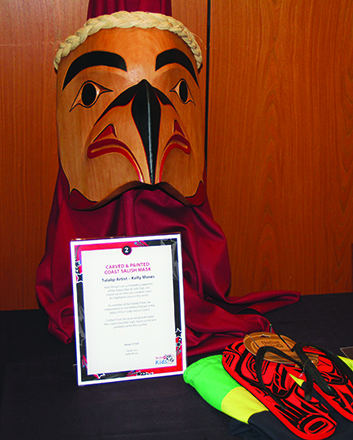
On behalf of the Tulalip Boys & Girls Club, the Tulalip Tribes thanks everyone who contributed to the success of the 18th annual auction. The outpouring of support received each year from sponsors and volunteers is quite overwhelming. As in years past, the funds raised from the auction will ensure that our club not only continues to provide, but improves upon, quality programs in a fun, safe and positive environment that make it such a positive place for kids to attend.
Contact Micheal Rios, mrios@tulaliptribes-nsn.gov
The Choctaw v climate change: ‘The earth is speaking’
In the US, members of the Choctaw nation fight to reclaim their relationship with the land in a world without seasons.
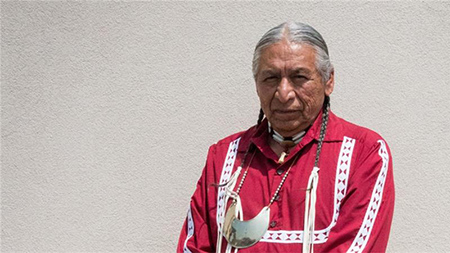
By Emily Crane Linn, Al Jazeera
Durant, Oklahoma – It’s nearly June. Every day, the Earth brings Darryl “Grey Eagle” Brown closer to the Sun, to heaven, to the Creator. That means it’s nearly time for the Eagle Sun Dance ceremony, a 12-day communal gathering of fasting, thanksgiving and prayer that takes place around the summer solstice, when the Creator is especially near.
Fifty-six-year-old Brown is a member of the Choctaw tribe of Oklahoma and a spiritual leader for a band of tribal members seeking to practise their indigenous religion. He learned the Sun Dance from another Choctaw elder who learned it from a tribe in the northern Great Plains. It is a pan-Indian dance – a blend of traditions and historic knowledge passed between the tribes of the Great Plains.
Brown has held this ceremony on his family’s land outside Durant, Oklahoma, each summer for 20 years. Every year, it seems to get hotter, he says, and the weather less predictable. Some years, they dance on parched ground under a cloudless sky. At other times, they’re nearly blown away by hot, angry winds. Last year, they were drenched in torrential floods. But regardless of what the weather holds, Brown must dance anyway because he feels the Choctaw – and the earth – needs him to.
“Our ceremonies help keep life in balance,” he says.
‘The earth is speaking, but man won’t listen’
Brown believes that both his people and the earth they inhabit are deeply out of balance, damaging one another as a result. “Man’s pollution has altered the earth,” he says. “The earth is speaking now, but man won’t listen.”
In Oklahoma, the earth seems to be shouting. From 2010 to 2015, the land plunged the state into a punishing drought, bringing the Choctaw nation to the brink of a water crisis. In 2011, it was the second-hottest summer on record, with more than 35 consecutive days of temperatures above 37 degrees Celsius. Then last summer, the missing rains arrived, but in devastating 30cm deluges. The seemingly incessant floods tore through the state all summer long, destroying houses and wiping out crops.
Brown knows the outside world has a term for these catastrophic weather shifts: climate change. He knows there have been summits and debates and policies on the matter. But here in Choctaw nation, Brown doesn’t place much stock in what the federal government or the United Nations have to say. The earth is speaking – speaking through thunderous rains, violent tornadoes and scrambled seasons.
“The seasons aren’t in order any more,” Brown says. “I remember winter in Oklahoma. I remember the ponds freezing up and staying that way for months. Now, we get a few days of cold, but no real winter.”
![Volunteers gather their wild gardening tools to cut back and clear out other plant species that are currently out-competing with the fragile river cane for resources [Nicholas Linn/Al Jazeera]](https://www.tulalipnews.com/wp/wp-content/uploads/2016/06/1002e41acd8f4541bd7e3e6b3dc7f495_18.jpg)
Historically, the Choctaw have proved to be adaptive to whatever nature has given them, says Scott Ketchum, a Choctaw member and PhD candidate studying Choctaw cultural history at the University of Oklahoma. “But now, you have a thunderstorm in January that normally marks the change of a growing cycle, and then the next week, you have a snow storm. What do you do with that?”
The earth is out of balance, Brown says, and his people are partly to blame. “It’s written in our teachings, the knowledge of how to take care of the earth,” he says. “We’re out of balance with that teaching.”
The Choctaw cultural identity has always hinged on an intimate connection with the environment, says Wilson Roberts, a tribal elder and spiritual teacher. “In my mother’s teaching, I was always taught that all animals and life-bearing things are just like us,” he says. “We’re a part of them, they’re a part of us. We’re supposed to take care of each other and look out for each other.”
The Choctaw have forgotten this, Roberts says. And what’s worse, they’ve failed to impart their knowledge to the settlers who now control much of their ancestral homeland. The Choctaw were forcibly removed to Oklahoma from their lands in Alabama and Mississippi in 1831. Twenty-five percent of the population died during the journey, and those who remained were converted to Christianity. “The government came in and took away everything,” Roberts says. “I’m talking about everything …. They burned our pipes and whatever we had that they thought might have some sort of ‘energy’, anything that was sacred to us.”
For Roberts, 76, this isn’t some far-flung part of his history – these are his grandparents’ stories.
The removal marked the beginning of the imbalance, Roberts says. “I always tell people that our downfall as a Choctaw nation is that we gave up what the Creator gave us,” he says. “We didn’t fight hard enough to keep it, and because of that, we’ve lost our continuity with the Creator.”
Healing the earth
Roberts and Brown believe that the only way to bring healing to both the earth and their tribe is for the Choctaw to reclaim their traditional relationship to their environment – and then spread those teachings to the rest of the US.
In a modest trailer that serves as a government office building, Ryan Spring labours to do just that. As the director of historic preservation for the Choctaw nation, it is Spring’s job to study his tribe’s past, relearn its traditions and help people like Roberts and Brown pass it on.
“The more culture and heritage we give back, the more we become whole again,” Spring says.
For Spring, a good place to start is by re-teaching traditional gardening. Historically, the Choctaw were adept farmers whose ceremonies and gatherings revolved around the growing cycles. Since their removal, however, they’ve become highly dependent on processed foods handed out through state welfare programmes. A return to traditional gardening will help members regain independence from state handouts, reduce their risk for heart disease and stroke brought on from the unhealthy foods they are given – and reduce their imprint on the environment.
There is a growing interest in learning traditional gardening, Spring says, but climate change poses a formidable challenge.
![Volunteers join Cain for a day of 'wild gardening' in the Sequoya National Wildlife Refuge in northeast Oklahoma [Nicholas Linn/Al Jazeera]](https://www.tulalipnews.com/wp/wp-content/uploads/2016/06/0e296309b18c444daf0d7d635451c2f5_18.jpg)
“The growing seasons are getting more and more unpredictable,” Spring says. “We’ll have longer cold snaps or six-year droughts. There’s no average.”
Spring teaches members to keep small gardens that are easier to manage, regardless of the weather. Brown has one, and he has learned to shift his planting and harvesting year-to-year and season-to-season, depending on what the weather appears to be doing. He can’t depend on regular, consistent cycles like his grandfather taught him to do, but by paying close attention to the weather – by listening to the earth – he can grow his food anyway.
Likewise, he has learned to perform his ceremonies not according to the seasons but according to the cycles of the Sun and Moon. This too is a departure from the Choctaw’s ancestral ways, Ketchum says, which revolved entirely around growing cycles. “You used to know to start a particular ceremony in June when a certain plant bloomed,” he says. “But now, it might be June and the plant won’t bloom at all or maybe it will have bloomed early.”
This sort of creativity and adaptability is a good thing, though, Brown says – perhaps even a divine thing.
“The weather will do what it does and we have to be adaptable,” he says. “We have to get creative, we have to find new ways to keep [ceremonial items] dry, which normally would already be dry or to hold a sweat lodge even when it’s chilly outside. But creativity is part of the [Creator], we have that creativity in us.”
Creativity is an essential feature of religious ceremonies like the one Brown is preparing to host. In preparation for such a ceremony, traditional families would historically have spent weeks weaving beautiful, brightly-coloured baskets to hold food for the dancers and sacrifices for the Creator. There will be no baskets this year, however: climate change and industrial agriculture have all but wiped out river cane, the plant used to make the baskets.
![Roger Cain is one of a handful of academics studying river cane. A Cherokee, Cain is working on a project to map what remains of the river cane on Cherokee land [Nicholas Linn/Al Jazeera]](https://www.tulalipnews.com/wp/wp-content/uploads/2016/06/dc04b5146b034804bf1ed91a77d56393_18.jpg)
The bamboo-like plant used to cover Oklahoma, growing in kilometre-wide swaths called “cane breaks”. Now, as much as 98 percent of it is gone, says Roger Cain, a river cane specialist from the nearby Cherokee Nation. “We had a massive die-off in 2011,” he explains. “We had two weeks in February where it was below [-17C]. I haven’t seen that kind of weather in my whole life.”
Flooding in 2015 further emaciated the river cane population. “We had floods wipe out entire cane breaks,” Spring said. “It’s grown back some since then; it’s surviving, but not on the level where we can use it to make baskets.”
Cain has worked with the Cherokee nation to declare river cane a culturally-protected plant species and has begun a project to map what populations remain in an attempt to preserve them. He holds regular “wild gardening” sessions where he visits these cane breaks and weeds out any invasive species that pose a threat to the plants. He is hopeful that with time and care, he will be able to restore these cane breaks to a level where tribes can resume regular large-scale basket weaving.
As Brown prepares to host the Sun Dance ceremony, he is keenly aware that everything he is doing is different from the ways of his ancestors. So much has changed. So much has been lost. But he will dance anyway. He will dance with what he has. “[Because] our ceremonies are helping,” he says. “They’re helping the cycles, they’re helping the earth.”
Funding for this article was provided in part by the Earth Journalism Network.
Co-Stewardship Ensures Tulalip Cultural Traditions Live On
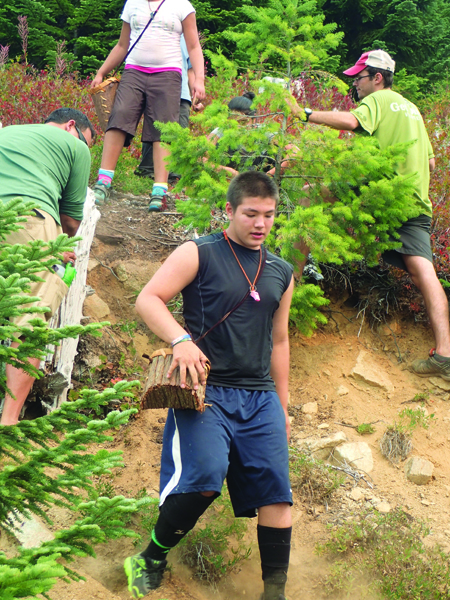
By Kalvin Valdillez, Tulalip News; Photos Courtesy of Libby Nelson, Tulalip Tribes Natural Resources
Annually, the Tulalip Tribes and the U.S. Forest Service hold a meeting regarding the Memorandum of Agreement (MOA) the two parties signed in 2007. The aforementioned MOA was created so that the Tulalip Tribes and the U.S. Forest Service can collaborate on the decision-making, planning, and counseling for the conservation of Tulalip’s resources on off-reservation ancestral lands in the Mt. Baker-Snoqualmie National Forest. This year the meeting was held on May 12, 2016.
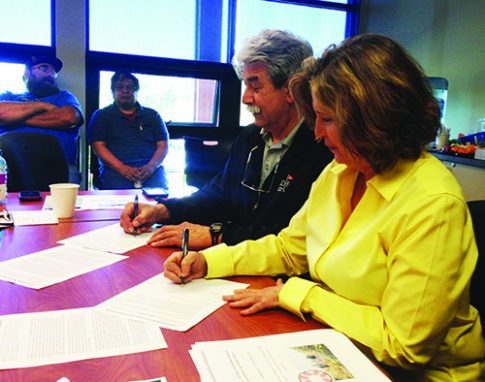
During 2016’s MOA meeting Chairman Sheldon and Forest Supervisor Jamie Kingsbury signed an historic and important agreement, the “swədaʔx̌ali Co-Stewardship Plan, 2016-2026”. The agreement, a provision to the MOA, is a culture resource management plan that covers the swədaʔx̌ali area over the next ten years. swədaʔx̌ali or “Place of Mountain Huckleberries” is a 1,280-acre parcel in Tulalip ancestral lands in the upper Skokomish watershed that the Tulalip-Forest Service Co-Stewardship looks to enhance. One of the many reasons this is important to the tribe is the huckleberry.
Northwest huckleberries are generally picked in the late summer/early fall seasons, and grow in the damp areas of mountains. The huckleberry, known for boosting the immune system, has always had a strong relationship to the indigenous peoples of the northwest. Coastal Native American ancestors considered the huckleberry to be of the utmost importance because of the medicine the plant contains.
Inez Bill, Tulalip Tribes Rediscovery Program Coordinator, provided a foreword for the swədaʔx̌ali Co-Stewardship Plan. In the foreword Inez spoke of the significance huckleberries and the spiritual connection Natives have with the berry.
Inez writes, “Huckleberry is a food and medicine to our people. Our ancestors visited certain areas for gathering these berries. They knew where the berries were growing, and what companion plants were growing there too and how to utilize them.” Like fishing and hunting the huckleberry is essential to the Native American culture. Preserving these plants requires a lot of love and care. Inez stated that caring for the swədaʔx̌ali area offers a chance to pass on the knowledge of the huckleberry and it’s harvest to Tulalip’s future generations.
“Through the teachings of how we value, take care of and utilize our environment, we pass down our history and traditions, and what is important to the cultural lifeway’s of our people, said Inez. ‘This connection to the land enables us to know who we are as a people. It is a remembrance.”
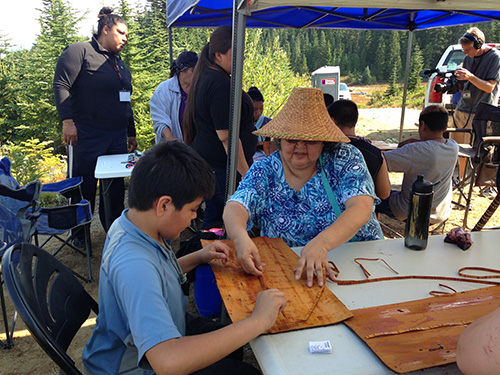
Tulalip Tribes Natural Resources Environmental Policy Analyst, Libby Nelson, agrees that passing the knowledge to the youth is essential to preserving Tulalip’s natural resources. The co-stewardship between the Tribe and the Forest Service is a way to ensure that Tulalip cultural traditions live on.
Libby states, “Treaty rights encompass more than an opportunity to pick berries, hunt game or harvest fish. Having a meaningful role on the ground, in the stewardship of these resources, helps reconnect tribal peoples to these lands and the teachings of their ancestors”.
Last year the Tulalip Tribes hosted it’s first Tulalip Mountain Camp at swədaʔx̌ali for the youth of the Tulalip community, and looks to make it an annual trip. Inez detailed the trip stating that the youth were able to experience a connection to the mountains and ancestral lands, which in turn allowed the youth to bond with their families and community members by sharing what they learned and observed during their experience.
Tulalip’s Natural Resource Department and the Tulalip Youth workers will manage the swədaʔx̌ali area incorporating both traditional practices passed down from the ancestors and western science while nurturing the plants.
Libby stated that the forestry department is set to begin work on the swədaʔx̌ali area this summer. “As part of this plan, Forestry will be working on one of the major huckleberry areas this summer because it is threatened with getting shaded-out by conifers, which are small now and easier to move as opposed to two to three years from now when they start to vault out and will be more difficult to get out.”
The Natural Resource Department is looking to engage both summer youth workers and Tulalip Mountain Camp attendees to help remove the small conifers that are now about two-feet tall and have has many as 22,000 per acre.
According to a Seattle Times article from 1946, families camped, sometimes for the whole picking season, while gathering huckleberries. Gathering huckleberries was considered a fun social event where families from different tribes would travel to take part in the festivities including games, dances, and singing. Ceremonies were also held thanking the creator for the vitamin packed berry and asking for a blessed harvest.
Often referred to as a superfood, huckleberry offers an abundance of benefits to its consumer. For example, these berries contain large amounts of antioxidants, which help aid in the prevention of many diseases such as cancer, diabetes and heart diseases. In today’s society diabetes is a prevalent disease in communities all across Native America. The huckleberry is a reliable food that diabetics can enjoy without elevated blood sugar levels. Huckleberries are used in a variety of recipes including tea, pie, and jam. When used for medicinal purposes the huckleberry can be applied to treat pain, heart conditions, and infections.
The swədaʔx̌ali Co-Stewardship Plan is an imperative provision to the MOA between the Tulalip Tribes and U.S. Forest Service, as evidenced by Inez in her conclusion. “Today, it is not only important that we continue the struggle to uphold our treaty rights, but we need to be involved in taking care of those resources our culture depends on so that they will be available for our future generations. This work at swədaʔx̌ali is an expression of Tulalip’s sovereignty regarding our foods, and our commitment to support the dietary needs and the life ways of our people.”
Quinault Indian Nation Lead Entity to Host Tour and Public Meeting on Salmon Habitat Restoration
Contact: Steve Robinson
(360) 951-2494
Spee-Bi-Dah, July 23, 2016
Tribal Membership Financial Meeting, July 21
Making Cedar Graduation Caps

“The creation story of Coast Salish people explains that there once lived a good man who always gave away his belongings and food to others. The creator recognized the man’s kindness and declared that once the man dies, a red cedar tree will grow where he is buried and the tree will continue to help the people.”
By Judy Gobin, Tulalip tribal member
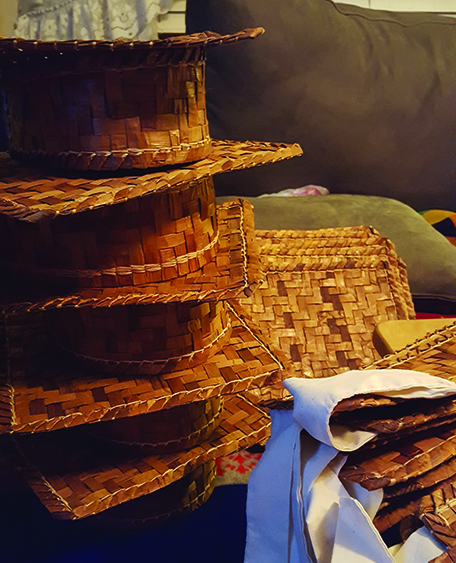
This beautiful tree has provided so much for us such as clothes and canoes for travel, and today we have them being made into graduation hats, (mortarboards). I have for many years woven hats upon demand, for students here in Tulalip, and for friends from all over that order them for their children.
This year my daughter Toni Jo and I were asked to weave for our own graduates at Tulalip. I felt so honored to be asked and as I wove them I thought about our children.
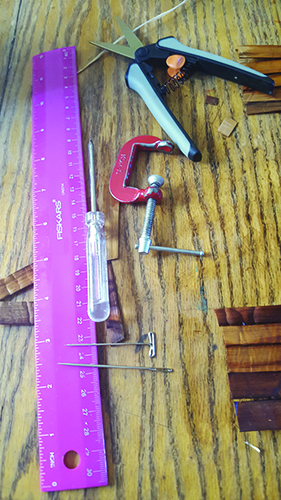
This is the largest order we have done to date, the complete order was 105 hats! We started cutting and splitting in mid-February and completion was this week (June 9). The photos show the progress and what tools we used, and of course the picture of all the completed hats.
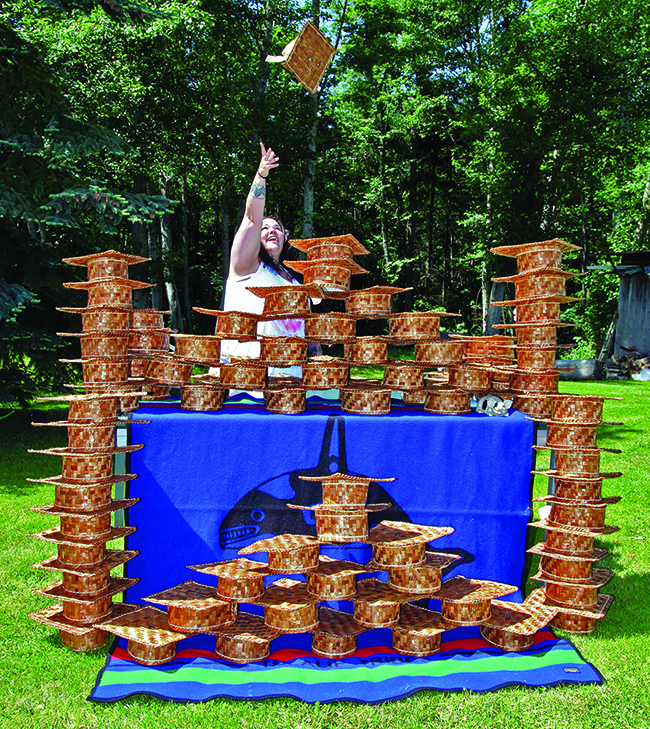
Students wore these beautful graduation caps at the June 13 high school graduation ceremony held at the Tulalip Resort Casino.



